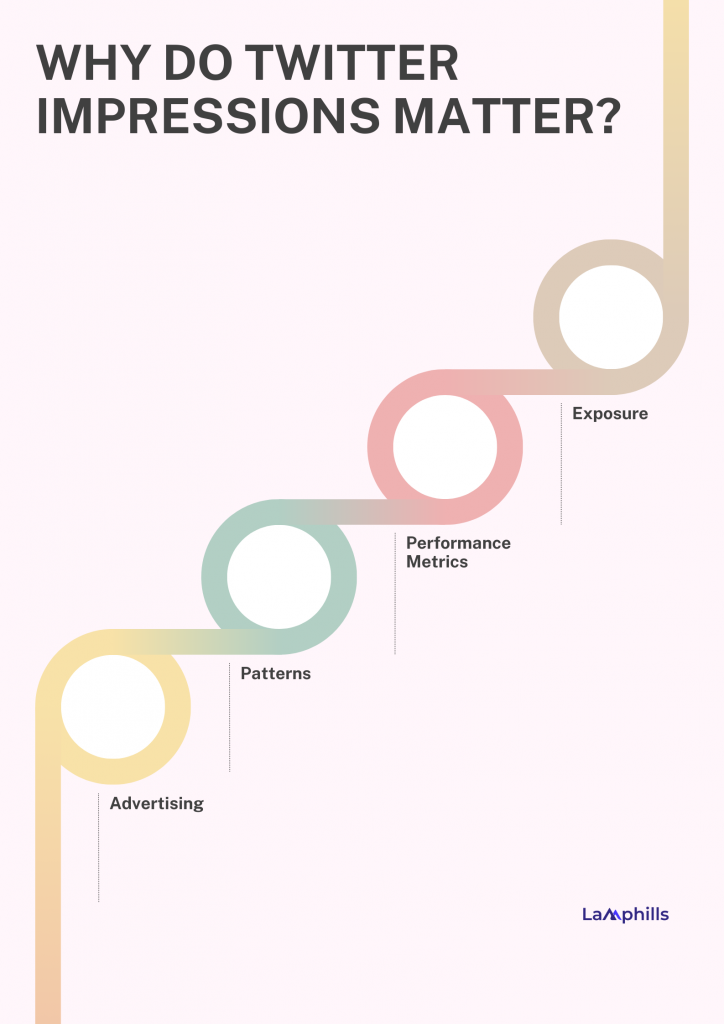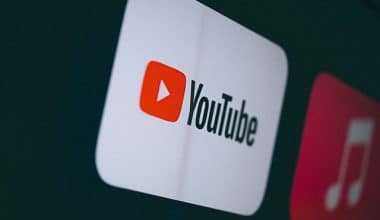Are you tired of scratching your head, trying to decipher those confusing Twitter analytics? Impressions, reach, engagement, what does it all mean? With so much jargon floating around, how do you know which metrics really matter for your Twitter game?
In this comprehensive guide, as someone who uses Twitter almost 10 hours daily, I will equip you with all you need to clearly understand this crucial metric so you can analyze and optimize your Twitter presence like a pro.
So grab a snack, get comfy, and get ready to become an impressions master. First, making sense of your Twitter stats is a big deal if you want to maximize this powerful platform. I’m talking about impacts on brand awareness, audience growth, lead generation, and more.
The digital marketing wizards out there know that impressions are where it’s at for assessing real influence and resonance. But there’s also a lot of misinformation and misunderstanding around this metric.
That’s why I’m here. We’ll explore what they actually measure, why they’re important, and pro tips for leveraging them to your advantage.
Key Points
- Brands should provide captivating, high-quality content that appeals to their target demographic to increase the likelihood of greater engagement rates
- The content and relevance of a tweet will ultimately determine the extent of engagement, even though Twitter impressions are useful for expanding a message’s potential reach
- You can also reach a more niche audience by collaborating with influencers interested in your business
What are Twitter impressions?
Twitter impressions are a metric that shows how often Twitter users have viewed a tweet. Impressions are not unique views, so if a person sees the same tweet numerous times, it counts as multiple impressions.
Twitter Impressions helps you determine the reach of your content and how many people it may reach. It is also a useful indicator for assessing the efficacy of Twitter campaigns and understanding audience behavior.
How Twitter Impressions and Engagement Rate Interact
The perfect Tweet will have many impressions and a high engagement rate. Having both indicates that your Tweet reached many people and was relevant enough to warrant engagement. Twitter Analytics shows the engagement rate for each Tweet over time, allowing you to compare the performance of one Tweet to the monthly average.
The Engagement Rate is calculated by dividing the number of engagements by the total number of impressions. Engagement encompasses any interaction with a Tweet, such as Retweets, clicks, and Likes.
If you have a high number of followers but a low impression number, your tweets may be inactive. If you have a high impression number but a poor interaction rate, your Tweets require some improvement. If you have the opposite, try tweeting at a different hour.
Why Do Twitter Impressions Matter?
Twitter impressions offer useful insights into tweet performance and impact in the following ways:

#1. Exposure
Impressions show how often a tweet has been viewed, indicating its overall exposure. This is significant for marketers since it allows them to see how often their message has been viewed, even if consumers do not interact with the tweet.
#2. Performance Metrics
Impressions are a key indicator for determining the effectiveness of a tweet. Brands may utilize impressions to assess the reach and impact of their tweets and compare the outcomes to their social media goals.
#3. Patterns
Twitter impressions can also spot patterns and trends in user behavior, like the most popular material among followers or when users are most active on the platform.
#4. Advertising
Impressions are an important indicator for measuring the success of Twitter ad campaigns. Impressions can provide information about the success of targeting, the relevancy of ad material, and the campaign’s overall impact.
5 Strategies to Boost Your Impressions on Twitter
There’s little doubt that these five tried-and-true methods can boost your Twitter impressions.
#1. Employ Multimedia
Incorporating photos, videos, and GIFs into my tweets helped me become more visually appealing and engaging, increasing impressions and interaction. Multimedia tweets typically garner greater attention than text-only tweets. Retweeting, liking, and commenting on other people’s work also helped my tweet become more visible to my followers, improving the impressions it received.
Furthermore, Twitter’s algorithm prioritizes tweets with multimedia information over text-only tweets, which may help them appear more prominently on users’ timelines. For instance, if users interact with image-rich tweets regularly, Twitter’s algorithm might display more tweets with photos in their timelines.
Employing multimedia also helped me communicate my point more clearly and make a lasting impact on my audience. A tweet that includes a video instead of just words can effectively highlight the qualities and advantages of a new product.
#2. Employ Hashtags
Adding pertinent hashtags to your tweets facilitates consumers’ finding your information, which can help you gain more exposure and reach.
Using hashtags to classify and arrange tweets according to similar subjects or themes might help make your tweets more visible to others who share your interests. Even if they don’t follow the account that submitted the tweet, people who search for a specific hashtag can view all the tweets that contain it.
#3. Collaborate With Influencers
Partnering with influencers related to your company and with a sizable following can increase your reach and visibility on Twitter.
When I started working on my personal brand, I needed to boost it, so I had a friend who was an influencer. I called her and asked her to help, and then boom!! When you collaborate with an influencer, they might produce brand-promoting material and tweet it to their following. By doing this, you can help the tweet become more visible and expose your brand to their followers, who might not have known about it.
You can also reach a more niche audience by collaborating with influencers interested in your business. Influencers specialize in one area of interest, so you may reach a more niche-specific audience with whom you are more likely to interact and share your content.
#4. Post When It’s Appropriate
Post when your target audience is most active to increase the likelihood of your tweet being viewed and interacted with.
Knowing when your audience is most active on Twitter allows you to time your tweets to maximize visibility and reach. For instance, publishing during work hours can help your tweets gain more visibility if your target audience is more active. Doing this increases the likelihood that others will see, interact with, and retweet your tweets, which can help boost impressions and reach.
#5. Talk To Your Fans
You can broaden your Twitter audience and visibility by interacting with your followers through retweeting or replying to their tweets.
Reacting to your followers’ tweets, retweeting their content, or liking them can help you establish a relationship with them and entice them to interact with your material.
Content that receives interaction from followers—likes, comments, and retweets—gets more exposure and reaches their followers. As a result of more people seeing your material, impressions may rise.
#6. Using Meltwater to Increase Your Twitter Organic Reach
Using a single dashboard, Meltwater simplifies the creation, scheduling, and analysis of your Tweets. You can reach your target audience where they are by using AI-driven social listening and consumer intelligence to find out what material they interact with when they are most active and what topics they discuss online.
Meltwater gives the figures context so your Twitter analytics tools work better. Meltwater uses statistics to help you achieve your goals, whether to grow your following, start your first Twitter campaign, or raise your engagement rate.
Checklist on Twitter Impresssions.pdf
Twitter Impressions’ Effect on Engagement
Twitter engagements measure the total amount of likes, retweets, comments, and mentions on a tweet, while Twitter impressions track how many times a tweet appears on a user’s profile, feed, or search results. For Twitter users, engagements are regarded as more significant than impressions.
Twitter impressions can impact engagement in several ways. The likelihood of interaction increases generally with the number of impressions a tweet gets.
The correlation between Twitter impressions and engagement can be summed up as follows:
#1. Engagement Rate is Equal to (impressions/engagements) x 100
The total amount of user interactions with a tweet, including clicks, replies, retweets, and likes, is called an engagement.
Impressions are the total number of times users have viewed the tweet.
One may determine the engagement rate by dividing the total number of engagements by the total number of impressions and multiplying the result by 100. This is the proportion of users who interacted with the tweet out of all the users who viewed it.
For instance, the engagement rate of a tweet with 10,000 impressions and 500 engagements (likes, retweets, replies, and clicks) would be:
#2. 50% is the Engagement rate (500 / 10,000) × 100
This indicates that 5% of individuals who viewed the tweet were interested. A higher engagement rate means a higher percentage of users who thought the tweet was engaging, interesting, or relevant.
Here’s what to remember! The content and relevance of a tweet will ultimately determine the extent of engagement, even though Twitter impressions are useful for expanding a message’s potential reach. To enhance the likelihood of greater engagement rates, brands should provide captivating, high-quality content that appeals to their target demographic.
What Counts as an Impression on Twitter?
Impressions do not measure the number of unique viewers of your content; rather, they measure the number of appearances. One impression, for instance, occurs when someone views your content just once. However, if they view it five times, that individual has five impressions of your content.
How do I increase my impressions on Twitter?
- Recognize your target.
- Converse with your followers rather than about them.
- Make use of pertinent hashtags.
- Recognize when to tweet.
- Include calls to action.
- Recognize that less is not more.
- Make use of pictures.
- Be intimate.
How many Twitter impressions are good?
In general, a good impression rate is defined as your targeted audience favoring 20–25% of your published material relative to your number of followers.
Conclusion
Twitter impressions are a crucial indicator of your tweets’ visibility and interaction. This measure can also help you understand the efficacy of your Twitter campaigns and optimize your Twitter marketing approach.
Several tactics can be employed to increase Twitter impressions, including using hashtags, scheduling posts appropriately, incorporating multimedia, interacting with followers, and collaborating with influencers. By implementing these tactics, brands can expand their reach and Twitter exposure, boosting engagement and conversion rates.
Related Articles
- List Of Top Political Commentators In 2024
- 20 BEST MEDIA MONITORING TOOLS IN 2024
- Influencer Media Kit: Examples, Templates & Tips to Inspire You




